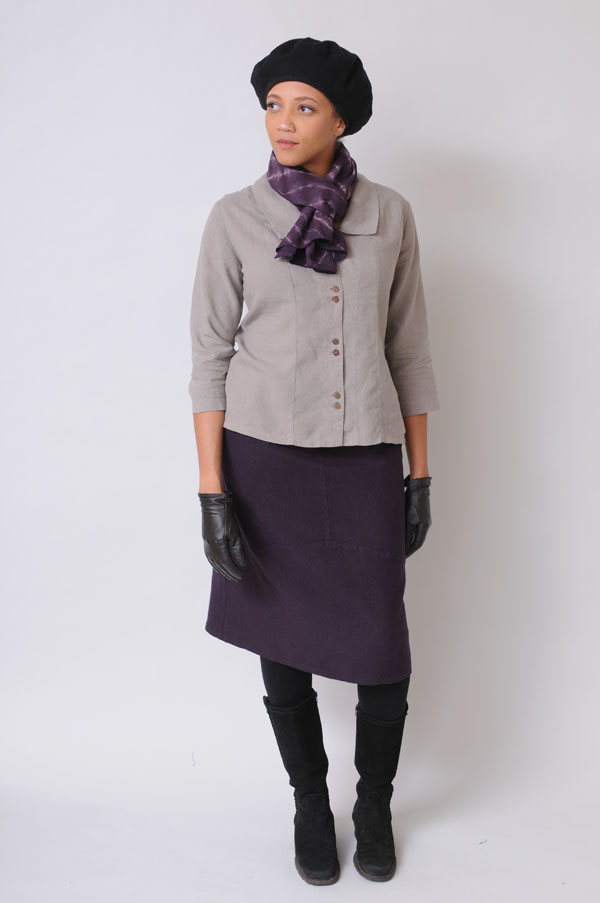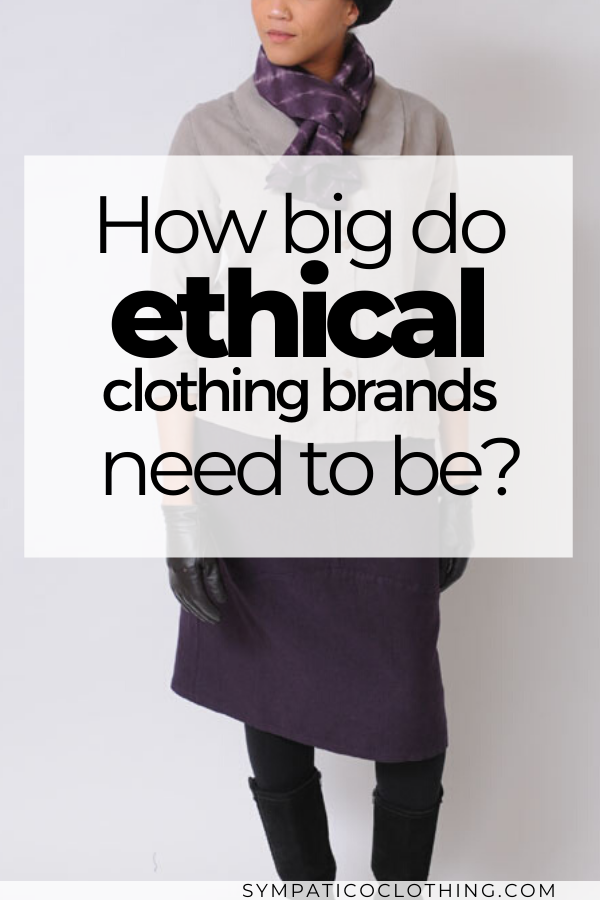Just how big do ethical clothing brands need to be?
Posted by Rose on 17th Dec 2019
Can sustainable clothing brands actually do what they promise and how big do they need to be to succeed?

Nikki wears hemp head to toe in her Princess Top, hemp scarf and Curved Skirt.
I've been up to my elbows in a sustainable clothing business for the past 18 years, and during that time there’s been one enduring question I've pondered: To be viable, just how big does Sympatico have to be?
Choosing to limit growth and committing to small and local can sometimes seem irrational. There are the obvious challenges ethical clothing microbusinesses face that involve things like economies of scale as well as access to sustainable, transparent supply chains. In June 2019 I blogged about how forming relationships with my suppliers is a key element in trying to overcome the liabilities of running a sustainable women’s clothing business that is microscopic in terms of the global economy.
READ MORE: Microbusinesses matter more than you think
Of course, forming relationships with customers is a way to distinguish Sympatico from competitors too. Whether it’s emails or a phone call about an online order or a face-to-face encounter at a craft fair or at my workshop, those interactions are a core part of the idea of Sympatico. These moments of contact are, above all, personal and focused around an audience of one. Yet to remain viable, Sympatico must over time attract new customers.
So the question becomes, just how big does Sympatico need to be and remain a genuine sustainable clothing brand? I have no qualms about remaining tiny in relation to the apparel industry at large. But how do I achieve sustainable growth that’s scaled according to my personal ethics and outlook? According to a blog post by the brilliant thinker/marketer Seth Godin, the key is delighting an audience that you’ve carefully chosen. That hit hit home where Sympatico’s concerned. Typical of Seth, it’s brief and pithy, so I’m sharing the post in its entirety:
The minimum viable audience
The smallest group that could possibly sustain you in your work…
If you could pick the members of this audience, who would you choose? Their dreams, their world views, their energy, all up to you.
If you could pick them and needed to delight them because you had no one else available, would your product or service improve? If you had no choice but to ignore the naysayers (they’re not in the group) or the people who don’t think they need you or your work, would that force you to stop compromising and start excelling?
Two things happen when you delight your minimum viable audience:
On the other hand, if you aim for mass (another word for average), you’ll probably create something average. Which gets you not very far.
These strike me as words to live by when it comes to right-sizing your sustainable apparel brand. Instead of relying on flash-in-the-pan marketing campaigns or social-media strategies engineered for maximum likes, simply doing your work very well for the right audience can work. It turns out that the evangelistas and influencers I really want are YOU, customers and readers of this blog!

Share:





